When talking pistol bullets, there are two main types on the market – Full Metal Jacket and Copper Plated bullets.
So why they both exists, what’s the difference and which one is for you?
We’ll try to cover these questions in this post.
In order to make a comparison, we’ll use two particular famous bullets from LOS manufacturer – 9mm 124gr FMJ and 9mm 123gr Copper Plated.
| 124gr FMJ | 123gr CP | |
| Diameter | .355″ | .356″ |
| Weight | 124 grain | 123 grain |
| Material | Brass | Copper |
| Shape | Round Nose | Round Nose |
Lets discuss some of the obvious physical differences and then we’ll see how they perform in actual shooting.
First you will notice is the diameter, which is 0.001″ higher for the CP bullet. Many copper plated bullets (not only LOS) are like this. The reason is because the material is pretty soft plus it fills the barrel rifling better. While the LOS copper plated bullets are pretty good formed, still the FMJ looks with a little bit better finish, so the additional one thousand is improving the actual shot.
While copper plated bullets are pretty much copper (what a surprise 😀 ), FMJs can be copper or brass (which is essentially copper + zinc).
Note that when “copper plated” sounds like very thin layer of copper (and in some cases of bullets with low quality it is, like microns), LOS copper plated bullets are with pretty thick layer of copper.
We made a “dissection” of both bullets and you can see how they look here:
The front cut shows that the copper plated layer is thinner, on the back cut they are with almost identical thickness.
We also added the lathe material on the third image to show how the different technology reflects the casing. Simply the “jacket” is easier to detach, while the plating process of adding copper makes it much better attached to the lead core.
Then we go to the weight – 123gr vs 124gr (respectively 147gr vs 145gr in the heavier variant). I can’t say what’s the eventual reason behind this.
So how they differ in real world and what is preferable from the shooters?
In my tests, they perform very similar, I actually can’t see any obvious difference.
Velocity is very similar (even the fact their weight is slightly different), accuracy is equally good. My personal preference is the FMJ as the bullet feeder works better. But even a manual feed is easier. Also maybe the brass variant of the FMJ is leaving less barrel fouling.
But be sure that the copper plated does not let the lead core to touch your barrel. 🙂
Since the lead core is fully enclosed of the CP variant, there is no lead dust left after the bullet leaves the barrel. For this reason some shooters likes more the copper plated bullets for closed range shooting.
Also LOS is producing different shapes of copper plated bullets – RN, FP, HP, RNFP, SWC and WC, while their FMJ gamma is RN only.
In my area the LOS bullets are widely used in hunting and sports shooting, including major loads and they have really good reputation of reliable and quality bullets.
They’ve become very popular in entire Europe and also in NA as affordable, yet very competitive product.
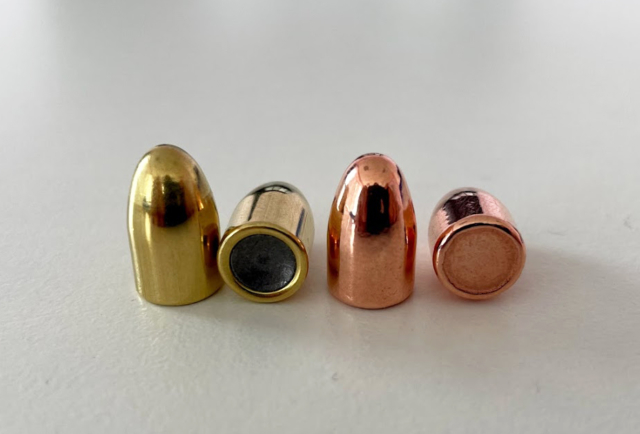
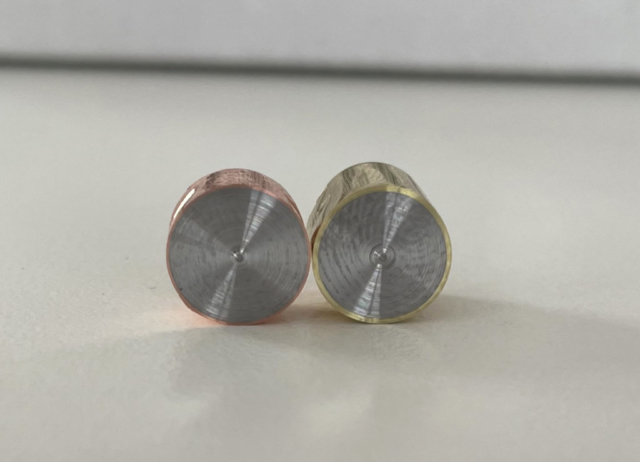
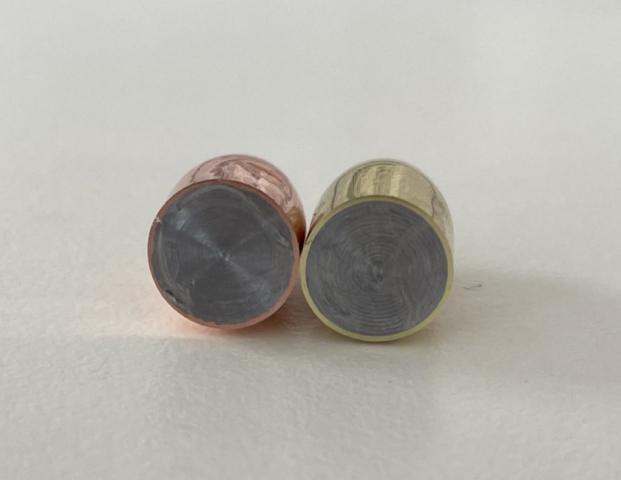
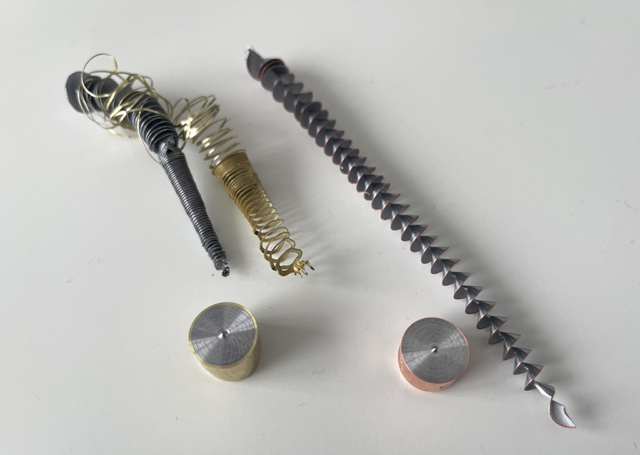
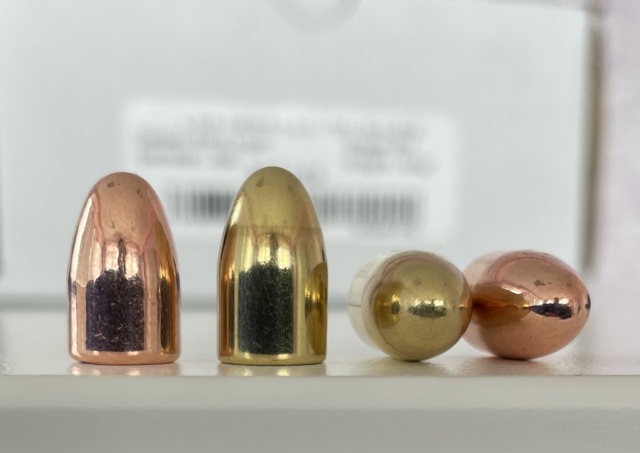
Thank you for the article, I’ve always wondered how the two bullets compared and why a shooter may use one versus the other. Which do you think would be better for shooting in my .30 carbine from 1943?
Thank you for the comment.
Basically if the plating is tick enough, it will work as expected.
.30 Carbine velocity is significantly higher than a pistol one, so probably need a try to tell the result. 🙂